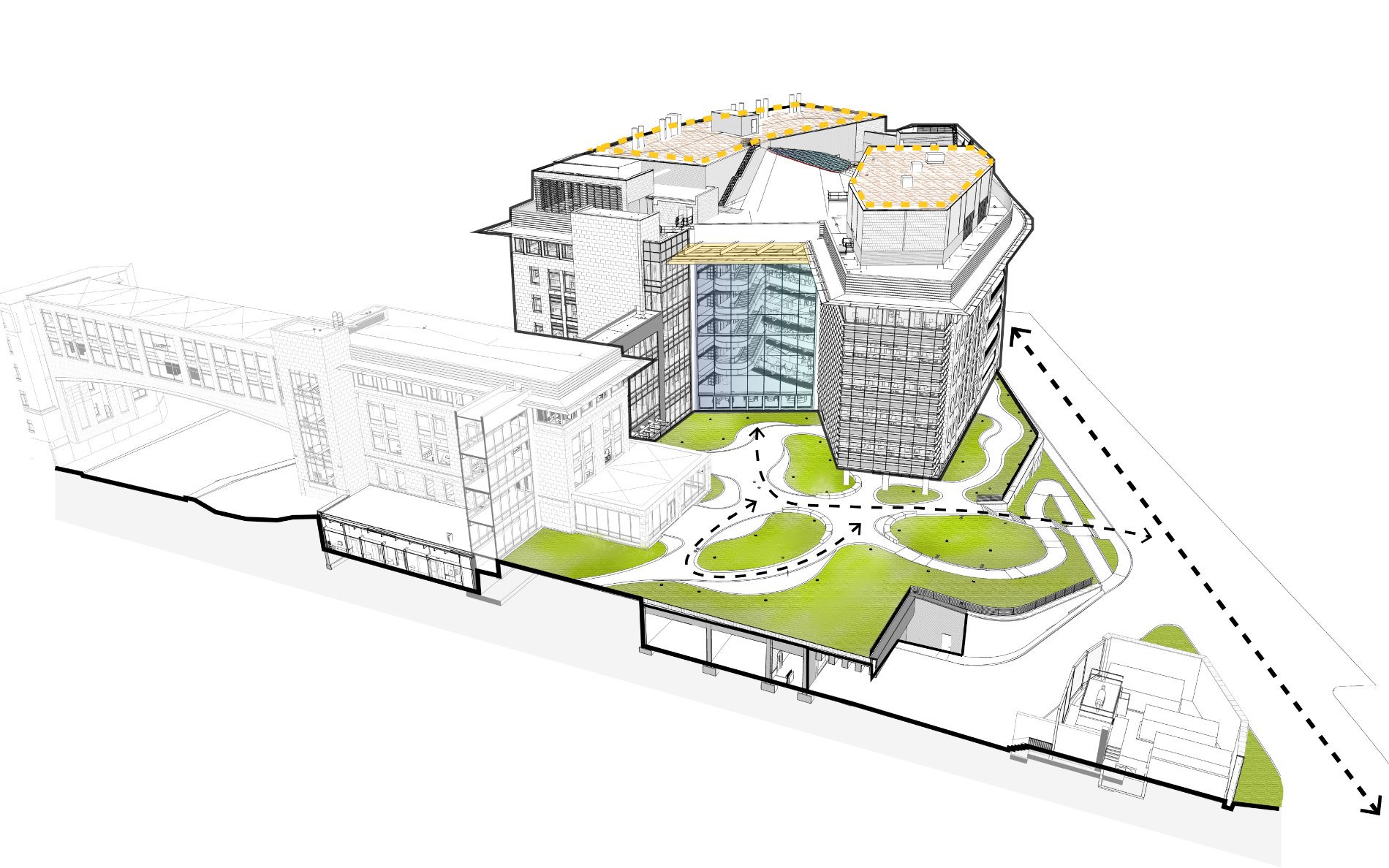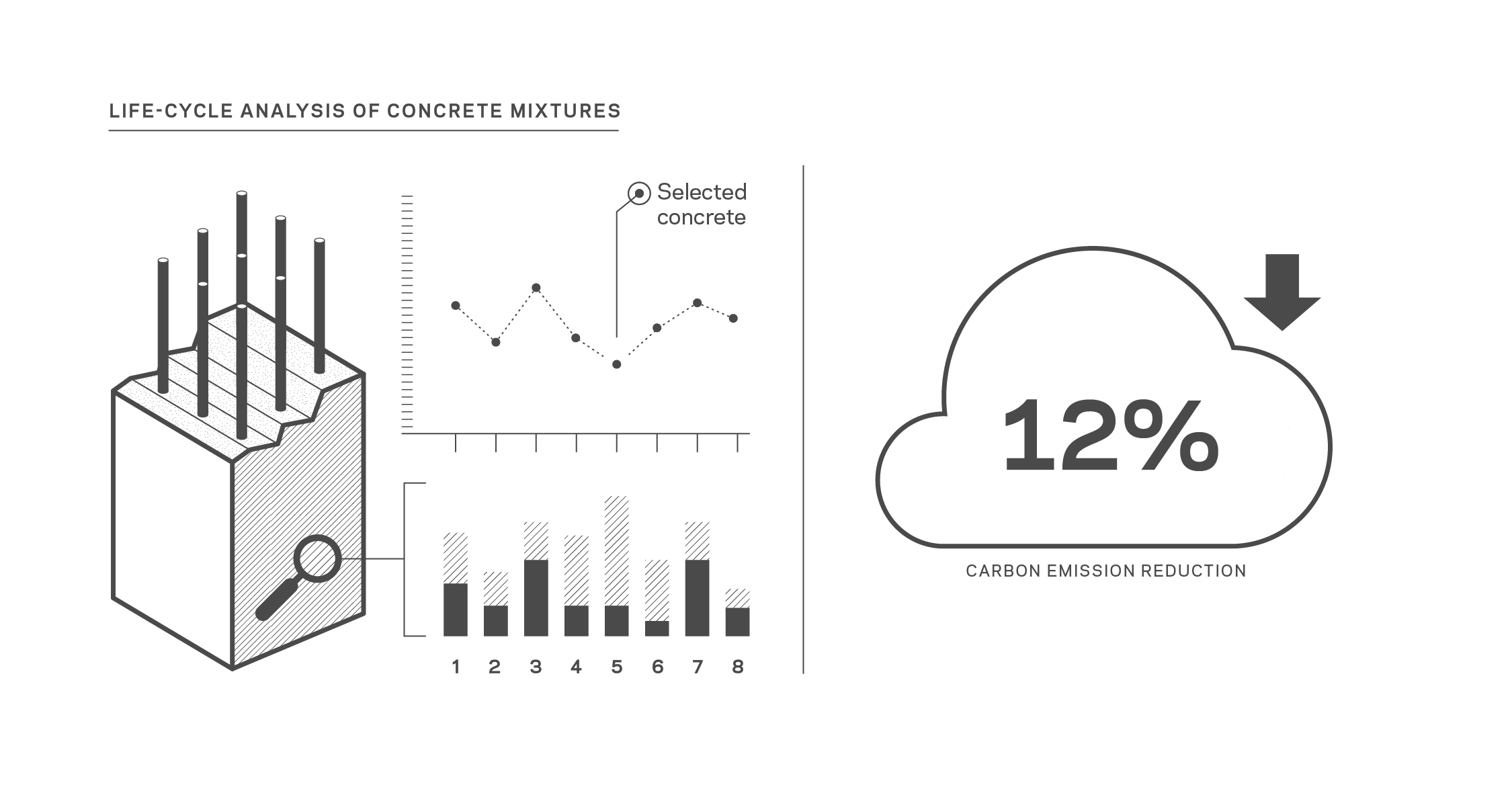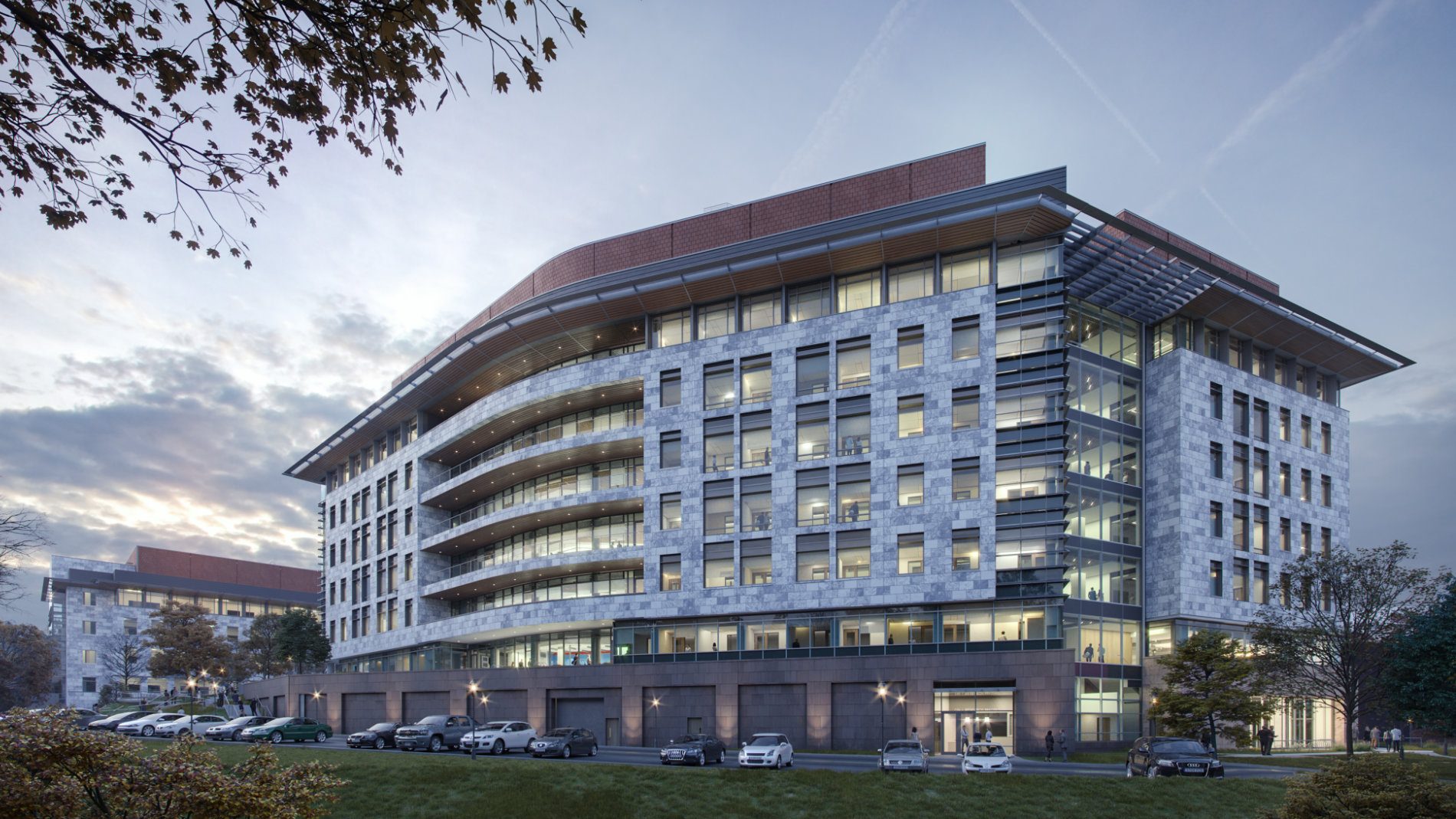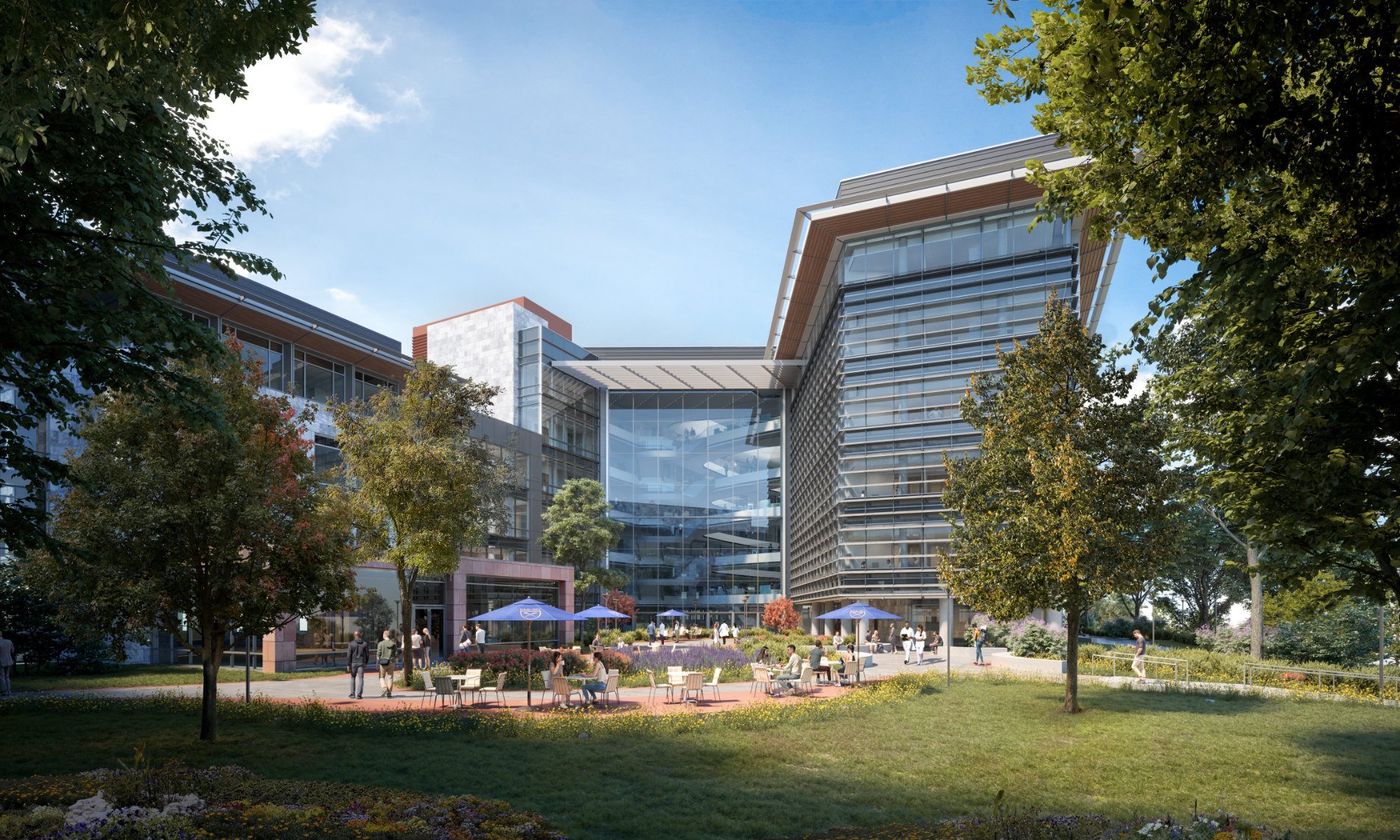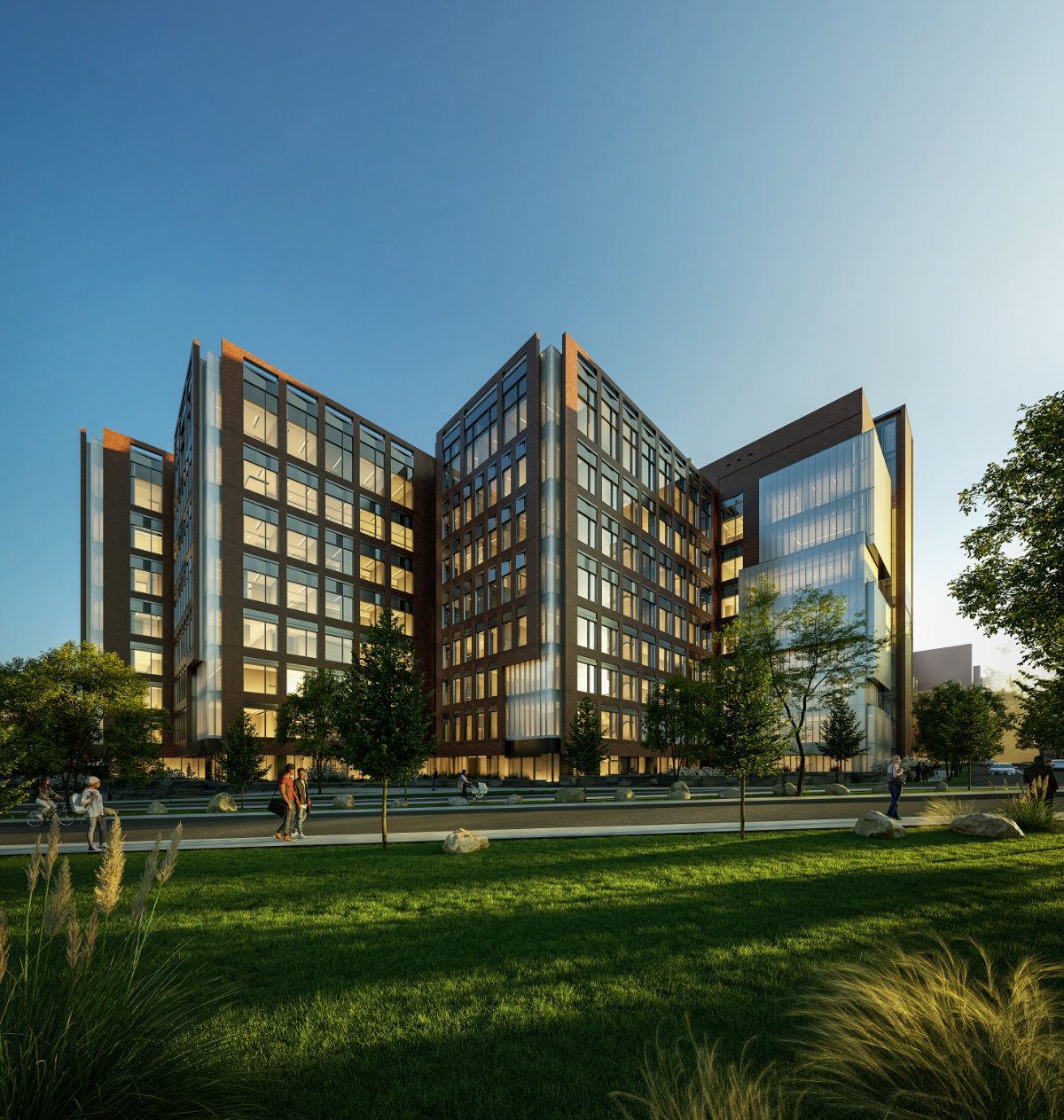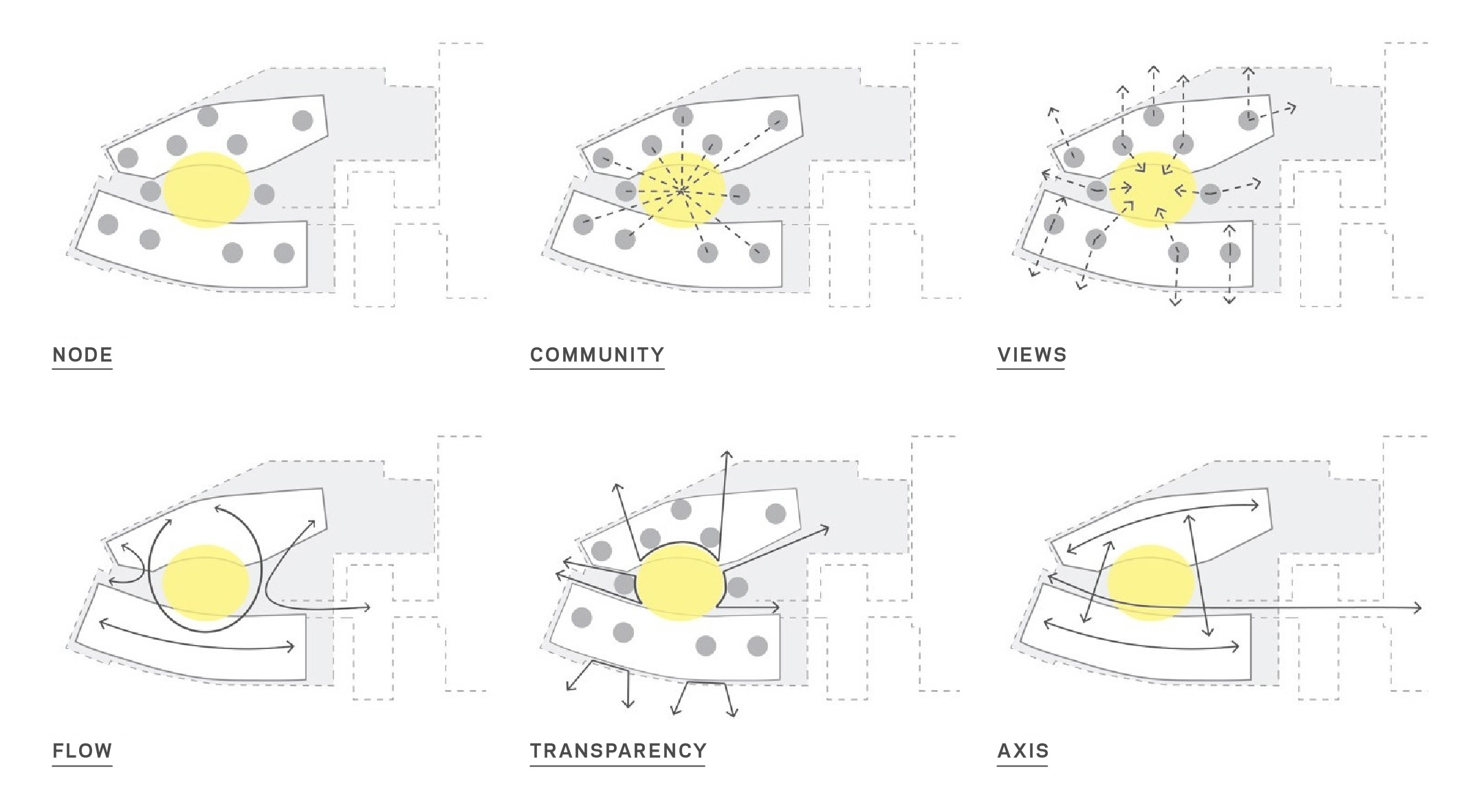
HSRB II brings together 1,200 biomedical researchers from cardiology, vaccinology, neurology, oncology and pediatrics and places them in a 350,000-sq.-ft. building designed to spur collaboration and innovation.
Open views between floors visually connect scientists across disciplines. Shared community spaces foster serendipitous encounters and cross pollination. An innovation zone pairs research with industry, and a first-of-its kind digital platform links building occupants to solve the world’s most pressing challenges.
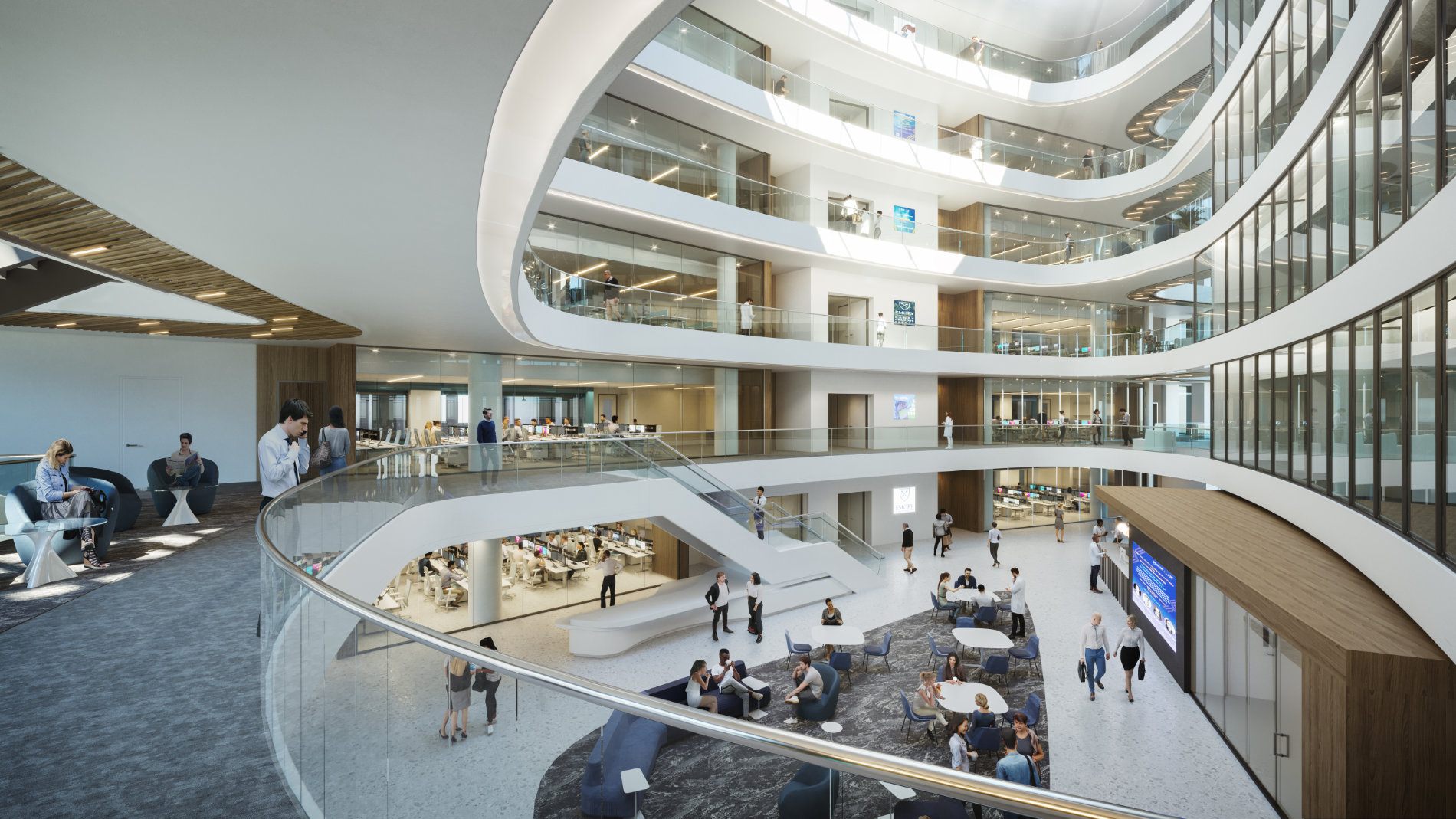
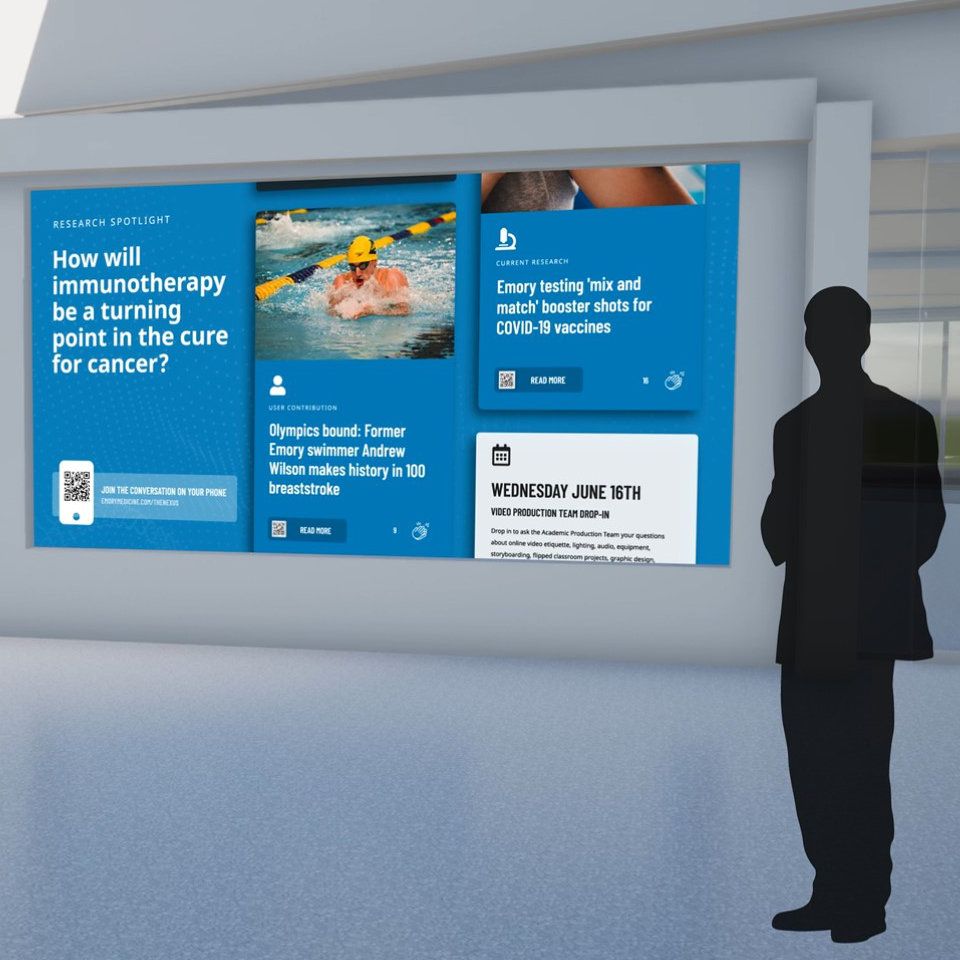
HOK worked with Emory and experience design firm ZEBRADOG to create a building-wide visual communications system. The centerpiece of the platform, the Nexus, presents building occupants with a ‘big question’ of the day. The system is designed to prompt cross-disciplinary discussions that could lead to new scientific discoveries.
At the building’s central entrance, a multi-panel video display called the Wonder Wall provides space for storytelling and big announcements. The Spine, a series of display panels running vertically up the central atrium, offers departments on each floor an opportunity to showcase their culture and brand.
“HSRB II will facilitate our vision of reimagining medicine—providing an innovative and collaborative environment that encourages us to tackle the most challenging problems in biomedical research and human health and providing the best chance of success.”
— Dr. Vikas P. Sukhatme, Dean of the Emory University School of Medicine
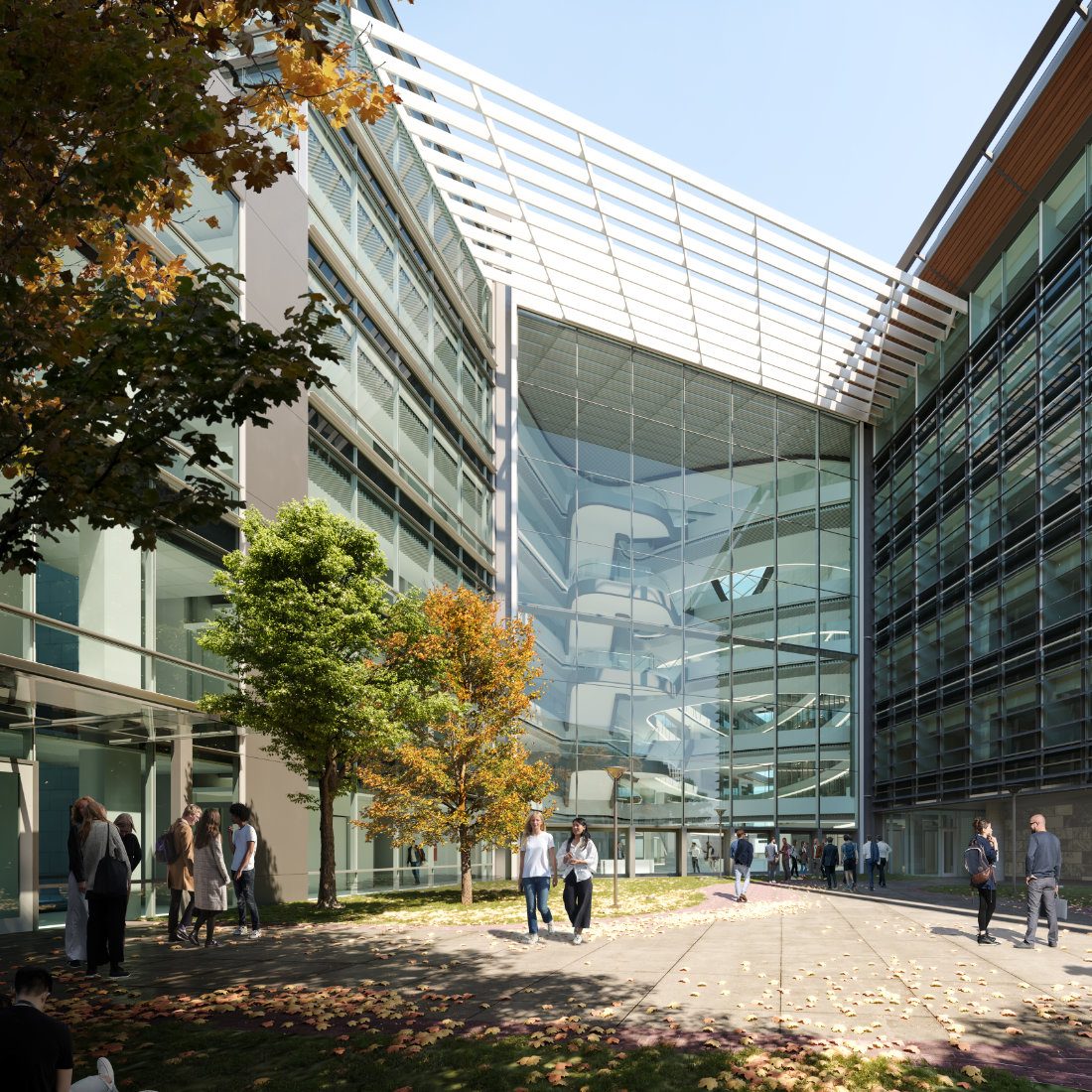
The biophilic design strategies prioritize well-being and connecting people to nature. Skylights and glass curtain walls bring natural light deep into the building floor plate. A central staircase encourages occupants to walk from floor to floor. An on-site café offers healthy food choices.
HSRB II embraces its connection to the Lullwater Preserve, an adjacent 154-acre wooded landscape. Balconies on the north end of the building offer sweeping views onto the preserve and quiet spots for people to experience fresh air and respite. Bike storage and showers encourage people to walk and cycle to work and enjoy the preserve’s many trails.
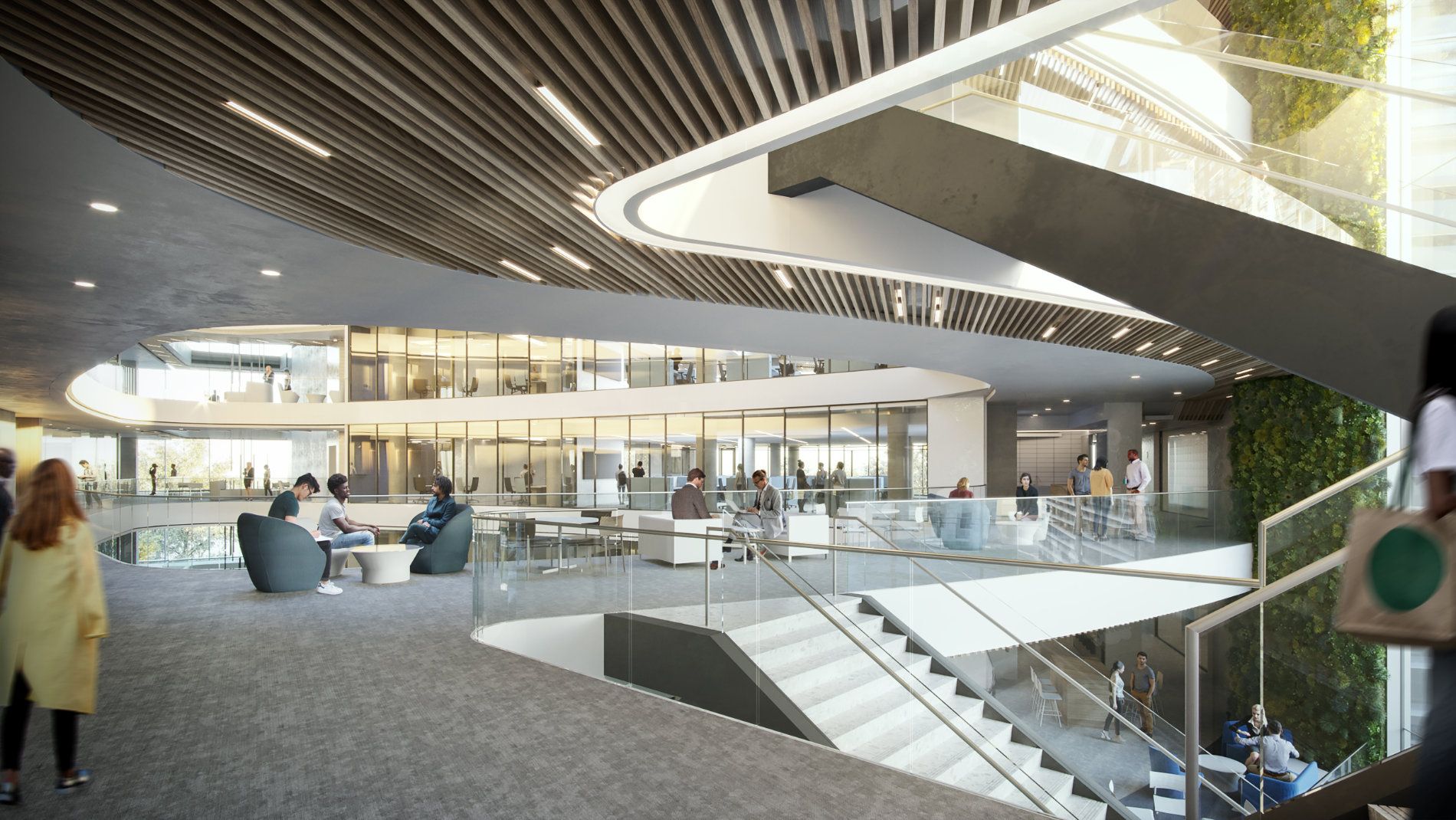
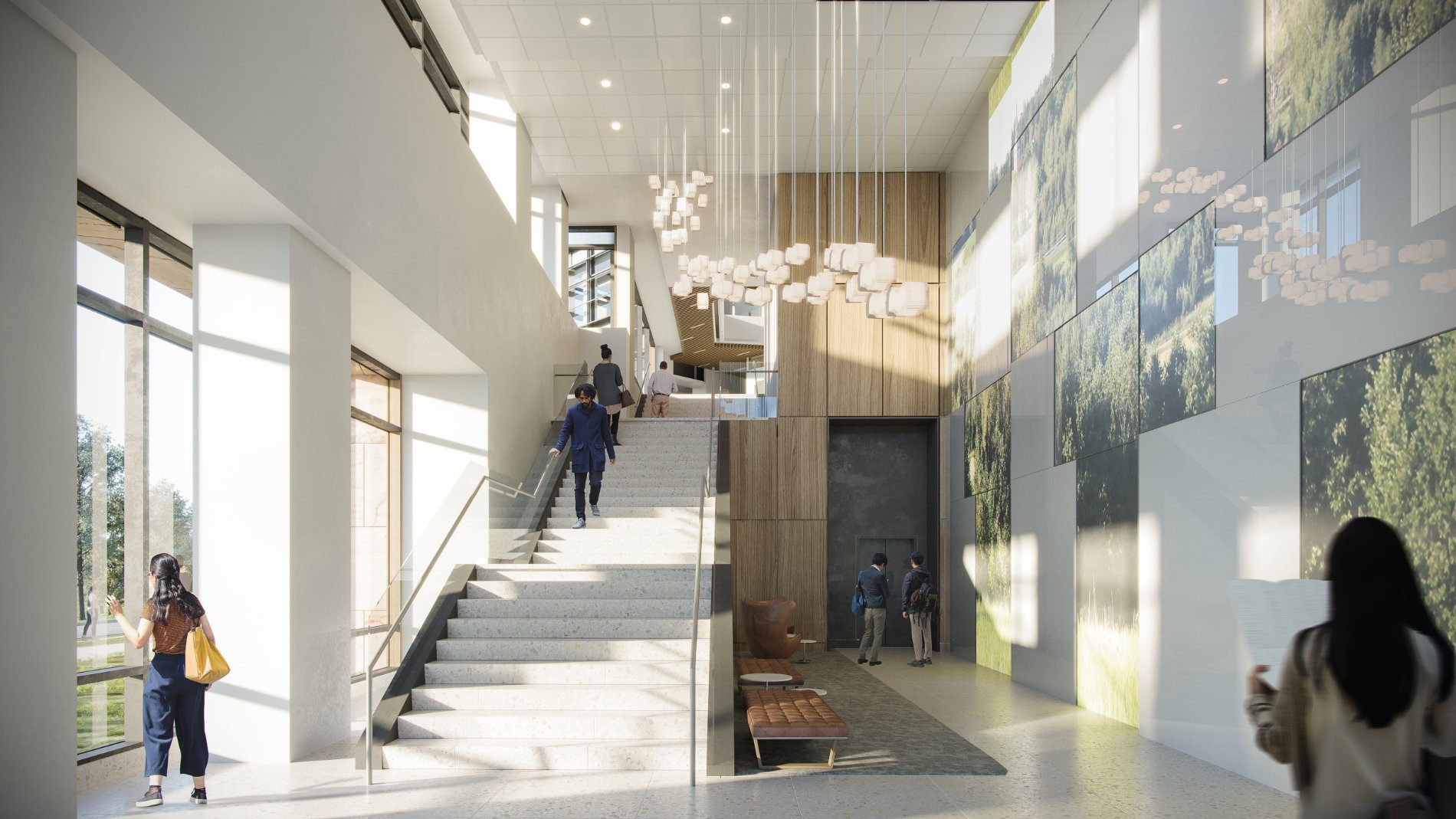
Research buildings are resource-intensive, consuming five to 10 times more energy per square foot than similar-size office buildings. HSRB II is an outlier. The building is on track to earn LEED Gold certification following its 2022 opening and is expected to operate on a predicted energy use intensity (EUI) of 156 kBtu/sf/yr—roughly half the average EUI for scientific buildings of its scale.
The design team analyzed 96 different sustainability solutions based on first costs, life-cycle costs, maintenance and simple rate of return. The final design includes many of those solutions including green roofs, stormwater retention, graywater reuse, solar panels and on-site energy storage.
